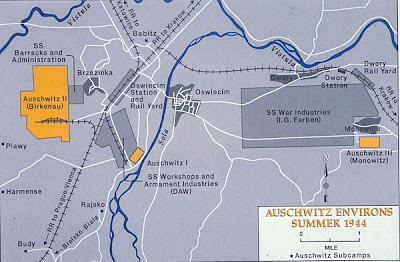| ทำงานช่วงเวลา | 1944–45 |
| ผลิต | 18 |
| สำเร็จ | 3 |
| สเปค | |
| น้ำหนัก: | 5,223 ตัน |
| ยาว: | 122 เมตร (400 ฟุต) |
| ระยะโซนิค: | 12.0 เมตร (39 ฟุต) |
| ช่องถ่ายเทอากาศ: | 7.0 เมตร (23 ฟุต) |
เซ็นโตกุ | |
เรือลำนี้บรรทุก Aichi M6A ได้สามลำ โผล่ขึ้นเหนือน้ำเพื่อโจมตี, เมื่อเ้ป้าหมายถูกทำลายก็และดำลงไป.และมี ตอปิโดพิสัยไกล้เพื่อป้องกันตัวเองด้วย
I-400-class ได้สร้างขึ้นเพื่อเดินทางไปได้ทุกๆที่ที่เป็นผืนน้ำ 18ลำ ถูกสร้างขึ้นในปี 1942 และเริ่มสร้างและปฏิบัติการในเดือนมกราคมปี 1943 ที่ โรงงานผลิตยุทโธปกรณ์คุเระในฮิโรชิมา
รุ่นก่อนหน้านี้ที่ทำออกมา 5รุ่น ซึ่งมี 3 ลำซึ่งทำที่ I-400 ที่ คุเระ, and I-401 และ I-402 สร้างที่ ซาเซโบ
Characteristics
Each submarine had four 3,000 horsepower (2.2 MW) engines and carried enough fuel to go around the world one-and-a-half times — more than enough to reach the United States traveling east or west. They displaced 6,500 tons and were over 400 feet (120 m) long, three times the size of the typical submarines of the time. They had a figure-eight hull shape affording additional strength to handle the on-deck hangar for housing the three aircraft. They also had four anti-aircraft guns, a large deck gun, and eight torpedo tubes.They were able to carry three Aichi M6A Seiran aircraft, each carrying an 800 kilogram (1,764 lb) bomb 650 miles (1000 km) at 295 miles per hour (474 km/h). The existence of the Seiran was unknown to Allied intelligence. The wings of the Seiran folded back, the horizontal stabilizers folded down, and the top of the vertical stabilizer folded over so the overall forward profile of the aircraft was within the diameter of its propeller. When prepared for flight, they had a wing span of 40 feet (12 m) and a length of 38 feet (11.6 m). A crew of four could prepare and get all three airborne in 45 minutes. The planes were launched from a 120-foot (37-m) catapult on the deck of the giant submarine. A restored Seiran airplane is displayed at the National Air and Space Museum in Washington, D.C.. Only one was ever recovered and it had been ravaged by weather and souvenir collectors, but the restoration team was able to reconstruct it accurately.
The I-402 was completed immediately before the war ended, but had been converted during building to a tanker and was never equipped with aircraft.[1]
[edit] Operational history
As the war turned against the Japanese and their fleet no longer had free rein in the Pacific, the Commander-in-Chief of the Japanese Combined Fleet, Admiral Isoroku Yamamoto, devised a daring plan to attack the cities of New York, Washington D.C., and other large American cities as well as to destroy the Panama Canal.Officers of I-400 in front of the plane hangar, photographed by the US Navy following the capture of the submarine at sea, one week after the end of hostilities.
Before the attack could commence from the Japanese naval base at Maizuru, word reached Japan that the Allies were preparing for an assault on the home islands. The mission was changed to attack the Allied naval base on Ulithi where the invasion was being assembled. Before that could take place, the Emperor announced the surrender of Japan.
On August 22, 1945, the crews of the submarines were ordered to destroy all their weapons. The torpedoes were fired without arming and the aircraft were launched without unfolding the wings and stabilizers. When I-401 surrendered to an American destroyer, the U.S. crew was astounded at its size.
[edit] American inspections
The U.S. Navy boarded and recovered 24 submarines including the three I-400 submarines, taking them to Sasebo Bay to study them. While there, they received a message that the Soviets were sending an inspection team to examine the submarines. To keep the technology out of the hands of the Soviets, Operation Road's End was instituted. Most of the submarines were taken to a position designated as Point Deep Six, about 40 miles (60 km) west of Nagasaki and off the Gotō Islands, were packed with charges of C-2 explosive and destroyed. They are today at a depth of 200 meters.Four remaining submarines (I-400, I-401, I-201 and I-203) were sailed to Hawaii by U.S. Navy technicians for further inspection. Upon completion of the inspections, the submarines were scuttled in the waters off Kalaeloa near Oahu in Hawaii by torpedoes from US submarine USS Trumpetfish (SS-425) on June 4, 1946, apparently because Soviet scientists were again demanding access to them. The wreckage of I-401 was rediscovered by the Pisces deep-sea submarines of the Hawaii Undersea Research Laboratory in March 2005 at a depth of 820 meters.

_1915_bank_note_-_1_yen_(back).jpg)


































